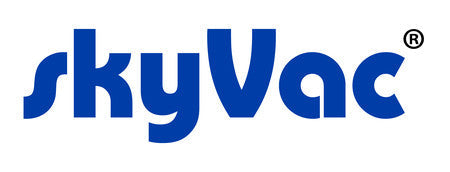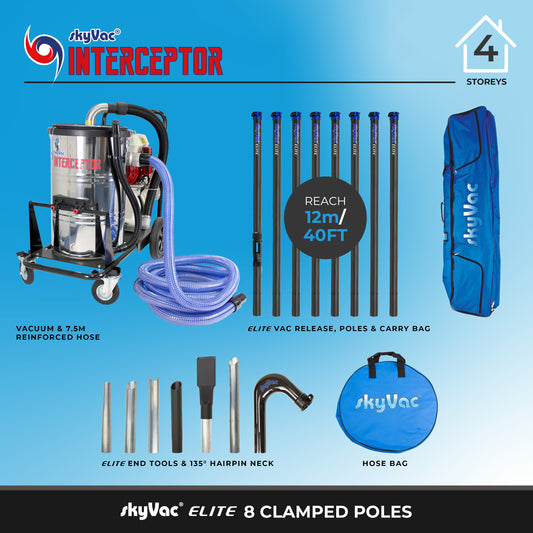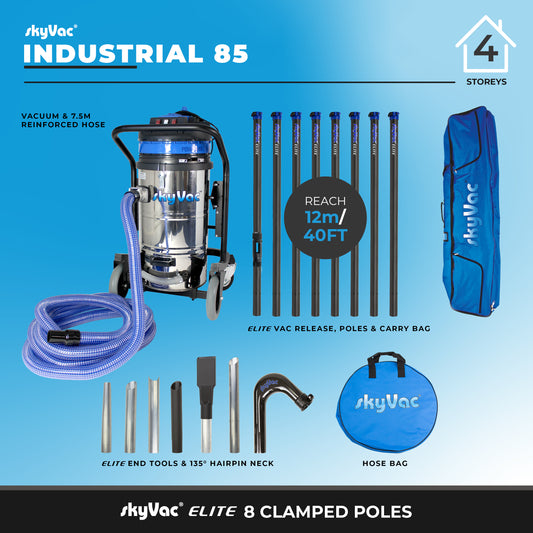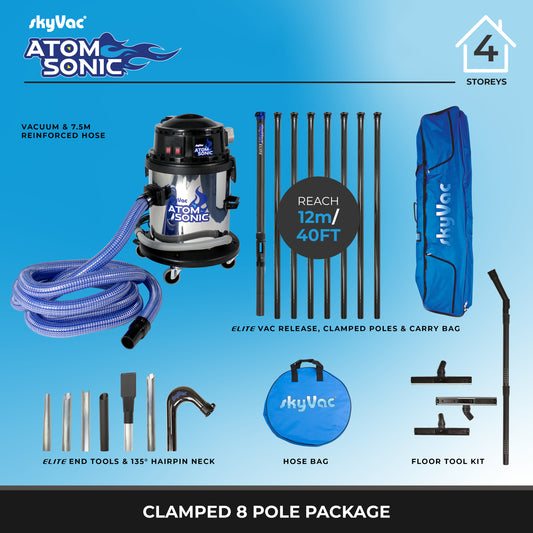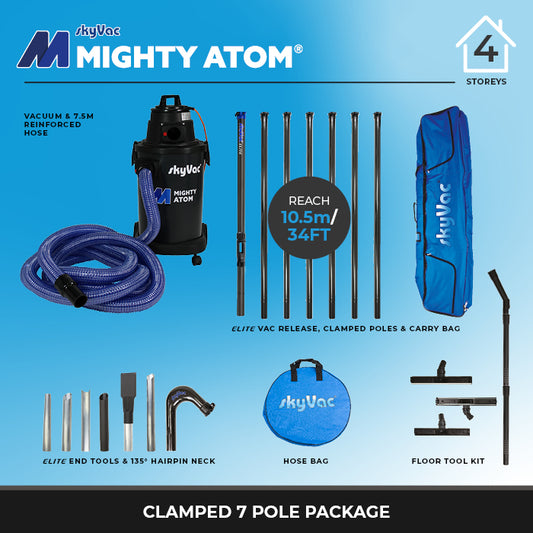Alcanza nuevas alturas: El plumero extendido definitivo para la limpieza de techos altos
Compartir
Todos sabemos que el polvo y la suciedad se acumulan con facilidad en lugares difíciles de alcanzar, especialmente en techos altos. No solo es desagradable a la vista, sino que puede afectar gravemente el aire que respiramos. Por eso hemos estado buscando las mejores maneras de afrontar estos exigentes retos de limpieza. Tras probar varias cosas, descubrimos que las herramientas adecuadas marcan la diferencia. Llegar a las alturas de forma segura y eficaz es clave, y creemos haber encontrado un sistema excelente para ello.
Conclusiones clave
- El polvo y la caspa se acumulan naturalmente en las superficies altas, lo que afecta la calidad del aire y puede generar riesgos de seguridad. La limpieza regular es importante para un ambiente más saludable.
- Para elegir el plumero extensible adecuado para techos altos es necesario buscar postes extensibles y livianos, a menudo hechos de fibra de carbono, y seleccionar accesorios de limpieza apropiados, como cepillos o cabezales de aspiradora, para la tarea específica.
- Usar un plumero extendido para techos altos de manera segura y eficiente significa operar desde el nivel del suelo, trabajando de arriba a abajo y manteniendo el equipo adecuadamente para obtener mejores resultados.
Comprender la necesidad de limpiar techos altos
Todos sabemos que el polvo y la suciedad se infiltran en cada rincón de nuestros edificios, pero ¿alguna vez te has puesto a pensar dónde acaban? Con el tiempo, partículas diminutas como células muertas de la piel, fibras de tela, suciedad e incluso caspa de mascotas se dispersan en el aire. Factores como nuestros sistemas de climatización, el movimiento de personas o incluso las corrientes de aire caliente pueden levantar estas partículas ligeras. Con el tiempo, se depositan en esos lugares difíciles de alcanzar, a gran altura.
Piensa en los techos, las lámparas, los conductos de ventilación, las tuberías y la parte superior de los estantes o armarios. Estas zonas se convierten en acumuladores de polvo involuntarios. No se trata solo de la apariencia, aunque un espacio limpio siempre se siente mejor. Esta acumulación puede afectar el aire que respiramos.
- Preocupaciones de salud: El polvo acumulado puede albergar alérgenos, esporas de moho y otros irritantes. Al ser removido, estas partículas pueden volver a ser transportadas por el aire, lo que podría provocar alergias o problemas respiratorios en los ocupantes.
- Riesgos de seguridad: En ciertos entornos, como almacenes o zonas con gran cantidad de equipos eléctricos, el polvo puede representar un peligro de incendio. Puede depositarse sobre superficies calientes o alrededor de componentes eléctricos, lo que aumenta el riesgo de ignición.
- Estética y profesionalismo: El polvo visible en superficies altas puede dar una mala impresión, especialmente en entornos comerciales como oficinas, tiendas minoristas o establecimientos de hostelería. Indica falta de atención al detalle.
Es fácil olvidarse de los espacios por encima de la altura de los ojos, pero estos desempeñan un papel fundamental en la limpieza y la salud general de un ambiente interior. La limpieza regular de estas zonas elevadas es tan importante como la de los suelos y las superficies con las que interactuamos a diario.
Precisamente por eso son tan importantes las herramientas especializadas. Necesitamos maneras de abordar estos espacios altos de forma segura y eficaz, sin recurrir a escaleras inestables ni andamios costosos. Contar con el equipo adecuado nos permite mantener una mejor calidad del aire y una apariencia más profesional en cualquier edificio. Para una limpieza eficaz de gran alcance, considere sistemas como el SkyVac® 78 .
Cómo elegir el plumero extendido adecuado para techos altos
Al abordar esos puntos difíciles de alcanzar, elegir el equipo adecuado marca la diferencia. Para la limpieza de techos altos, la pértiga es la herramienta principal, y su material es fundamental. Hemos comprobado que las pértigas de fibra de carbono son una opción fantástica. Son increíblemente ligeras, lo cual es una gran ventaja al manipularlas en altura durante largos periodos. Esto reduce la fatiga y hace que el proceso sea mucho más manejable.
Además del mango, los accesorios que uses son igual de importantes. Ten en cuenta el tipo de superficies que vas a limpiar. Para limpiar el polvo en general, un cabezal con cerdas suaves es ideal para capturar el polvo sin rayarlo. Si trabajas con superficies más delicadas o necesitas atrapar partículas finas, los accesorios de microfibra son excelentes. También nos gusta tener a mano herramientas especializadas, como cabezales angulares o flexibles, perfectos para limpiar alrededor de lámparas, tuberías o esquinas.
Al seleccionar su sistema, considere el alcance total que necesita. Algunos postes son telescópicos, lo que significa que se extienden y se fijan a la altura deseada, ofreciendo flexibilidad. Otros están compuestos por secciones entrelazadas. Por ejemplo, el sistema SkyVac Internal 30 puede combinarse con postes telescópicos de fibra de carbono o conjuntos de postes con abrazaderas, lo que nos brinda opciones según el trabajo específico.
Aquí hay algunas cosas que siempre tenemos en cuenta:
- Peso y equilibrio: un bastón bien equilibrado resulta natural de utilizar, incluso en su extensión máxima.
- Durabilidad: Necesitamos herramientas que puedan soportar el uso regular sin doblarse ni romperse.
- Variedad de accesorios: Contar con una gama de cepillos, plumeros y cabezales de aspiradora significa que estamos preparados para cualquier superficie.
No se trata solo de la longitud de la varilla, sino de cómo se siente en las manos y su eficacia con el cabezal de limpieza adecuado. Buscamos herramientas que ofrezcan control y precisión, facilitando el trabajo y mejorando los resultados.
Maximizando la eficiencia con su plumero extendido
Una vez que tengamos nuestro plumero extendido listo, es hora de pensar en cómo sacarle el máximo provecho. Queremos asegurarnos de limpiar de forma eficaz y segura, sin añadir trabajo extra. Se trata de trabajar de forma más inteligente, no más duro, ¿verdad?
Operación segura desde el nivel del suelo
Una de las mayores ventajas de estos plumeros de largo alcance es que se mantienen en el suelo. Esto significa que evitamos los riesgos asociados con escaleras y andamios. Podemos ajustar fácilmente la longitud del poste para alcanzar diferentes alturas, manteniendo los pies firmemente plantados. Es importante mantener una postura estable, especialmente al extender el poste por completo. Tenga en cuenta su equilibrio y asegúrese de tener un área despejada a su alrededor. También debemos tener en cuenta la distribución del peso al maniobrar el poste. Usar un poste ligero de fibra de carbono es muy útil, facilitando mucho su control.
Mejores prácticas para una limpieza a fondo
Para limpiar bien esos techos altos, necesitamos una buena estrategia. Aquí tienes algunos consejos que nos resultan útiles:
- Trabaje de arriba a abajo: Comience siempre por las superficies más altas y vaya bajando. De esta manera, el polvo que desprendamos no caerá sobre las zonas que ya hemos limpiado.
- Usa los accesorios adecuados: Cada superficie requiere herramientas diferentes. Por ejemplo, un cepillo es ideal para limpiar telarañas en vigas, mientras que una funda de microfibra puede ser mejor para lámparas delicadas. Podemos usar un portaherramientas de cuello flexible de silicona para llegar a zonas difíciles.
- Revise su equipo con regularidad: Asegúrese de que las secciones del bastón estén bien sujetas y de que todos los accesorios estén bien colocados antes de comenzar. También es recomendable revisar rápidamente el bastón para detectar posibles daños.
- Considere el entorno: Si limpia en una zona sensible, como un establecimiento de restauración, usar un sistema de aspiración es fundamental para contener el polvo. Para limpiar el polvo en general, un cepillo disipador de estática es una buena opción.
Hemos comprobado que un enfoque sistemático marca una gran diferencia. En lugar de simplemente limpiar al azar, planificar qué áreas abordar primero y usar las herramientas adecuadas para cada punto nos permite obtener un resultado mucho más limpio en menos tiempo. Se trata de ser metódico y aprovechar al máximo el equipo.
¡Sácale el máximo provecho a tu plumero extendido! Aprende trucos sencillos para limpiar más en menos tiempo. Visita nuestro sitio web hoy mismo y descubre cómo puedes trabajar de forma más inteligente, sin esforzarte más.
¿Listo para enfrentar esos espacios altos?
Así que ahí lo tienes. Limpiar esos lugares difíciles de alcanzar no tiene por qué ser una tarea ardua que implique subir escaleras peligrosas o llamar a profesionales por cada pequeña mota de polvo. Hemos visto cómo las herramientas adecuadas, como los plumeros extendidos que mencionamos, pueden marcar la diferencia. Se trata de hacer el trabajo más seguro, rápido y, sinceramente, mucho menos estresante. Esperamos que esta guía te ayude a sentirte más seguro/a para mantener cada rincón de tu espacio impecable. ¡Feliz limpieza!
Preguntas frecuentes
¿Por qué necesitamos limpiar techos altos?
Necesitamos limpiar los techos altos porque el polvo, la suciedad y los alérgenos tienden a acumularse en estos lugares. Esta acumulación puede hacer que el aire que respiramos sea menos saludable e incluso puede ser un peligro de incendio si se acumula cerca de luces o aparatos eléctricos. Además, ¡luce mucho mejor cuando todo está limpio!
¿Qué características debe tener un buen plumero para techos altos?
Un buen plumero para techos altos debe ser ligero para que no se canse fácilmente. Debe tener un mango largo y extensible, idealmente de fibra de carbono, para poder alcanzar esos puntos altos con seguridad desde el suelo. Los diferentes cabezales de limpieza, como cepillos o almohadillas de microfibra, también son importantes para eliminar diversos tipos de polvo y suciedad.
¿Cómo podemos utilizar un plumero extendido de forma segura y eficaz?
Para usarlo con seguridad, siempre nos colocamos sobre terreno firme y nos aseguramos de tener una visión clara de dónde estamos trabajando. Para mayor eficacia, trabajamos de arriba a abajo, para que el polvo no caiga sobre las áreas que ya hemos limpiado. También es recomendable limpiar o reemplazar los cabezales del plumero con regularidad para que funcionen de forma óptima.
